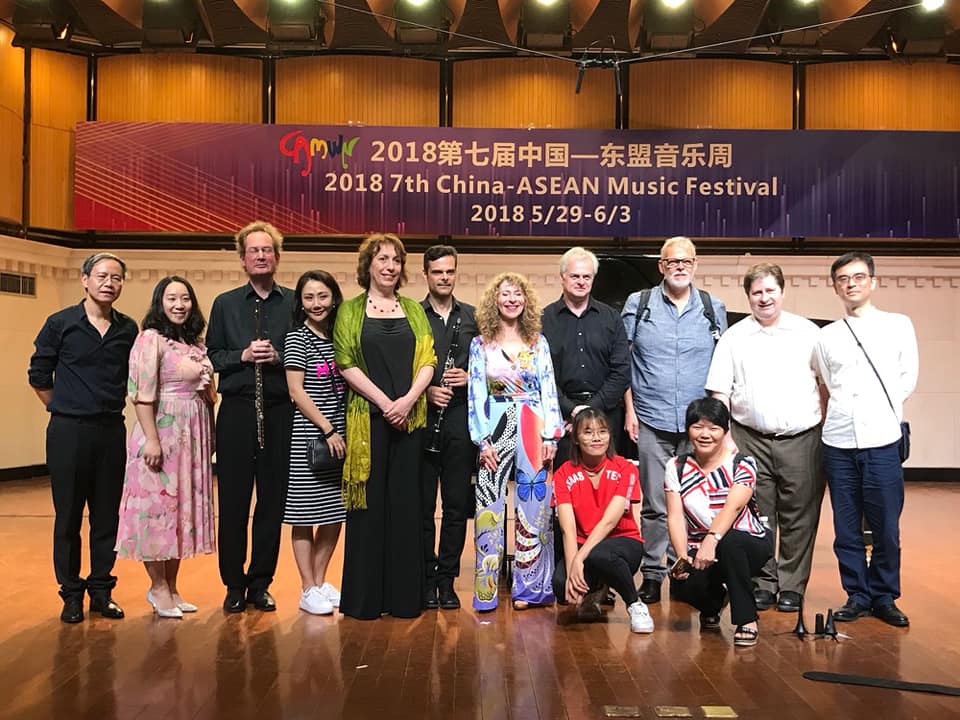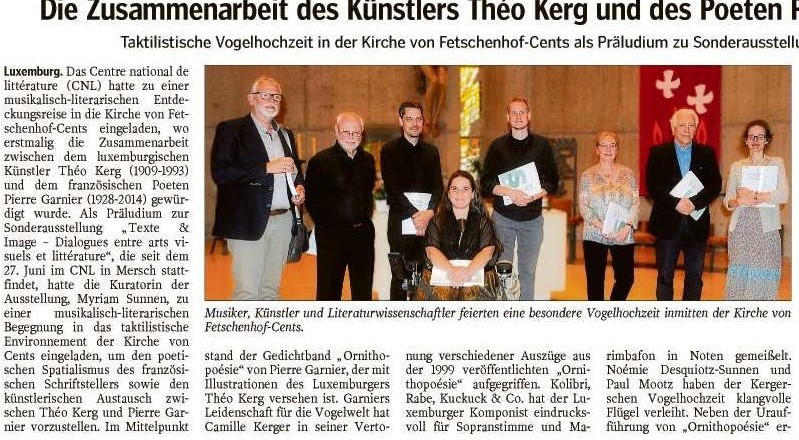From Red to Blue voit le jour….
C’est le travail de Paulo Lobo, un photographe luxembourgeois d’origine portugaise, connu pour sa « Street Art Photography », qui m’a inspiré From Red to Blue. J’ai choisi une dizaine de photos, principalement en noir et blanc, comme base pour composer ce morceau pour deux pianos. Mon intention n’était pas d’attribuer un élément musical à une photo mais plutôt de dégager une atmosphère générale de ces visuels et laisser l’auditeur créer ses propres images.
Ce morceau sera joué pour la première fois à Etalle (B), dans le cadre du spectacle « Hémisphères », proposé par Léna et Louise Kollmeier, deux pianistes belges talentueuses. Et je m’en réjouis tout particulièrement.
Les deux pièces maîtresses de ce programme sont des créations contemporaines inspirées d’univers opposés : d’un côté l’Equateur, de l’autre le Luxembourg. Le contraste entre la nature et la ville. Et enfin la différence des genres qui apporte une sensibilité particulière : d’une part, la compositrice Virginie Tasset, de l’autre, le compositeur Camille Kerger (je cite 😊).
Entre ces deux mondes contemporains, Léna et Louise interprèteront Six études canoniques de R. Schumann. Ces études ont été arrangées pour deux pianos par le compositeur français, Claude Debussy. On retrouve donc dans ces 6 courtes pièces des influences de l’époque baroque, romantique ou encore impressionniste.
Je suis impatient de découvrir ce programme, de participer à la rencontre de ces deux hémisphères, et j’espère vous y retrouver. En attendant, vous pourrez découvrir ici un extrait musical de From Red to Blue
From Red to Blue is coming to life…
From Red to Blue was inspired by the work of Paulo Lobo, a Luxembourg photographer of Portuguese origin, who is known for his « Street Art Photography ». I chose some ten, mostly black and white, photos to compose this piece for two pianos. My intent was not to match the single photos with musical elements. Rather I wanted to capture the general atmosphere emanating from Lobo’s visuals and let the listeners create their own images.
I am super excited that this piece will premiere on 15 August in Etalle (B), as part of the project ‘Hémisphères’, conceived by the two talented Belgian pianists Léna and Louise Kollmeier.
The program will consist of two main pieces of contemporary music, inspired by two opposite realities : Ecuador on one hand, and Luxembourg on the other hand. The contrast between nature on one hand and urban settings on the other hand. And also the difference between musical genres which convey specific sensitivities: the composer Virginie Tasset on one hand, and the composer Camille Kerger (I am just quoting here 😊) on the other hand.
In between these two contemporary worlds, Léna and Louise will interpret Schumann’s 6 Studies in Canon Form, arranged for two pianos by French composer Claude Debussy. These six short pieces hence draw upon influences of the baroque, romantic and impressionist periods.
I am very much looking forward to this performance, to the encounter of hemispheres, and I hope to see you there. In the meantime, here is a short taste of From Red to Blue



